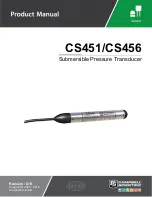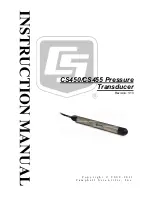
6. VSWR
Before use, it is important to determine the antenna
system’s VSWR (voltage standing wave ratio). First,
make sure the SWR bridge (meter) is in good working
order and is calibrated.
To ensure your radio is performing properly the VSWR
should never exceed 1.5 to 1. Never transmit on any
antenna system where the VSWR exceeds 1.8 to 1.
This will stress the output stage and could destroy the
RF transistors; this type of misuse and failure is not
covered under warranty.Measure the VSWR at the
center of the operating band.
Tune the antenna (according to the manufacturer’s
tuning instructions) so that the VSWR is as close to
1.1 to 1 at the center of the operating band.
Next, measure the VSWR at the lowest and highest
frequency of the transceiver. If the antenna has a wide
enough frequency range and band-pass, the VSWR
readings should be below 1.5 to 1 across the entire
operating band. If at the lower or upper end of the
transceiver operating frequency, the VSWR measures
more than 1.5 to 1, it is recommended that the antenna
be re-tuned before operating on those frequencies.
If you are experiencing unusual VSWR readings check
for the following possible problems:
1) Make sure that the antenna is installed properly and
grounded.
2) Check all coaxial cable and connectors for defects
and poor routing.
3) If testing a vehicle installation, make sure that all
vehicle doors are closed when testing.
4) Do not test near or around large metal objects or
buildings.
7. Ignition Noise
In certain vehicle installations, electrical noise or
interference may be present in the receive audio of the
transceiver.
Typically the vehicle’s ignition system or more
specifically the alternator generates this noise. The
OPTIMA is equipped with a noise blanker circuit
that is designed to improve, and in many instances
eliminate, this electrical noise.
In extreme cases, the noise blanker may not eliminate
all the electrical noise. In such cases, an after-market
alternator noise or ignition noise filter can be
purchased and installed according to the
manufacturer’s instructions.
If purchasing an alternator noise filter for the OPTIMA
make sure the filter is rated for at least 15 amps
continuous current draw.
Using With a Power Supply.
Do not place the Optima radio on top of the power supply.
Maintain a distance of 50cm between the power supply and
the radio where possible. The Optima is designed to be
used with an input voltage of 13.8v.
Using with an Amplifier.
The optima is not fitted with a PTT output to key an external
amplifier.
The output of the Optima can be used with any amplifier
capable of accepting a 50w PEP input. The power control
may be reduced to suit other types of amplifiers.
Be careful when using with dual transistor CB amplifiers as
the full output from the Optima can cause these amplifiers
to distort due to overdriven condition. Use a class AB
amplifer on SSB and make sure the output is suitably
filtered to reduce harmonics.
Remember that most distortion and amplifier failures are
caused by overdriving the amplifier.
Hi SWR and overheating are the next causes. Keep your
amplifier cool and have an SWR meter in line between the
amplifier and the antenna to observe the output of the
amplifier and SWR of the antenna at all times.
Try to maintain 50cm distance between the amplifier and
the radio to reduce RF feedback.
Ground the amplifier where possible, especially in mobile
installations.
MODE Information
.
(configured via Internal jumpers)
The jumpers (4) are found on the main board behind the 8
pin microphone socket. Only one jumper should be
engaged at a time.
Ham Mode
24.5 to 24.999mhz & 28.0 to 29.999mhz
Toggle between 12m and 10m by use of the call button.
NZ CB Mode
26.330 to 26.770mhz.
Covers the NZ 40ch CB band in 10khz steps and optional
channel readout.
Func and call to toggle between channel and frequency.
Shift function is not available.
USA/AUS 40ch CB Mode
Covers the USA 40ch CB band in 10khz steps and optional
channel readout.
Func and call to toggle between channel and frequency.
Shift function is not available.
Freeband Mode
Radios are usually shipped in this mode. All functions and
24.5 to 29.9mhz continuous coverage. No jumpers.
Jumpers on main board behind microphone socket
6






























